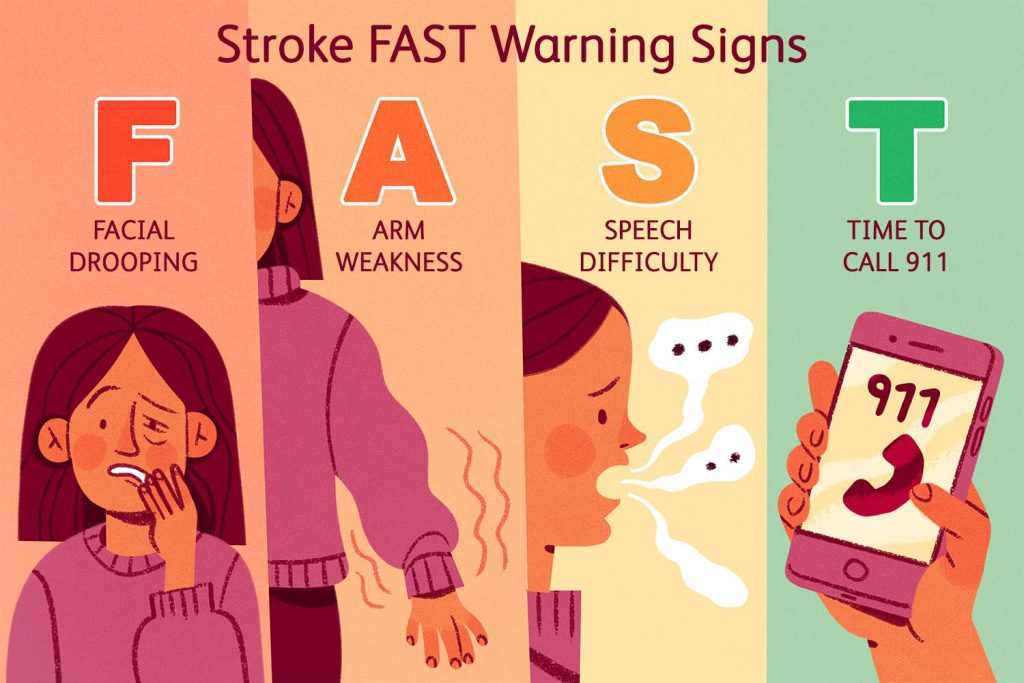
Every second matters when responding to a stroke, as identifying the early warning signs can significantly enhance survival rates and decrease the risk of lasting disabilities.
This article delves into the importance of recognizing stroke symptoms and how swift intervention can be life-saving.
According to the Centers for Disease Control (CDC), a stroke occurs every 40 seconds in the U.S., and every 3 minutes and 11 seconds, it claims a life.
A stroke is a critical medical emergency described as a condition “where every second counts.” It occurs when blood flow to the brain is disrupted, either due to a blockage (ischemic stroke) or a ruptured blood vessel (hemorrhagic stroke). Without oxygen, brain cells begin to die in mere minutes.
As one of the leading causes of disability, strokes often leave individuals with difficulties in speech, mobility, and cognitive abilities. However, prompt treatment can help reduce these impacts – the faster blood flow is restored, the less harm is done.
This is why recognizing the signs and acting immediately is essential.

Regardless of age, it is vital to recognize the early warning signs of stroke. Learn about the potential early warning signs of a stroke by reading on.
Act F.A.S.T.

The Mayo Clinic recommends using the FAST method to identify the most common stroke symptoms:
- F – Face: Does one side of the face droop or feel numb? Ask the person to smile and check if it looks uneven.
- A – Arms: Is one arm weak or numb? Ask the person to raise both arms. Does one drift downward?
- S – Speech: Is speech slurred, garbled, or hard to understand? Ask the person to repeat a simple sentence like, “The sky is blue.”
- T – Time to call 911: If you observe any of these signs, even if they go away, call for emergency help immediately.
Can There Be Warning Signs One Month Before a Stroke?
In addition to the common FAST symptoms, there are other warning signs that may signal a stroke:
- Sudden confusion: Difficulty understanding or speaking.
- Vision problems: This may include blurred vision, double vision, or a sudden loss of sight in one or both eyes.
- Severe headache: An abrupt, intense headache, particularly if it occurs alongside other symptoms.
- Dizziness or loss of balance: Challenges with walking, a lack of coordination, or unexpected falls.
- Numbness or weakness: A sudden loss of strength, often affecting one side of the body, such as the face, arm, or leg.
Prevention tips
- Manage high blood pressure and cholesterol.
- Stay active and maintain a healthy weight.
- Quit smoking and limit alcohol consumption.
- Control diabetes and other chronic conditions.
- Stay informed about family history and your risk factors.
Awareness is essential
Strokes can impact anyone: Although factors such as age, high blood pressure, and lifestyle habits elevate the risk, strokes are not limited to specific groups—they can occur to anyone at any moment. Even young individuals who appear to be in good health are not exempt. Being prepared equips you to respond effectively, regardless of who is affected.
- Saving lives starts with awareness: understanding the warning signs of a stroke not only protects you but also enables you to assist others. Picture yourself identifying these signs in a colleague, a loved one, or a friend and ensuring they receive timely medical care.
- Empowering yourself and those around you: Knowledge of stroke symptoms gives you the confidence to respond effectively during an emergency. Instead of succumbing to panic, you’ll know precisely what actions to take—call for help, provide accurate information to medical responders, and potentially save a life.
Always keep in mind that “every second counts.” Delays in treatment can significantly increase the chances of brain damage and permanent disability.
Recognizing stroke symptoms is among the most vital health insights you can possess. Acting swiftly doesn’t just save lives; it minimizes the risk of lasting health consequences.
Stay educated, share this critical information with the people you care about, and equip yourself to handle life-or-death emergencies. Your actions could be the difference that matters most!







